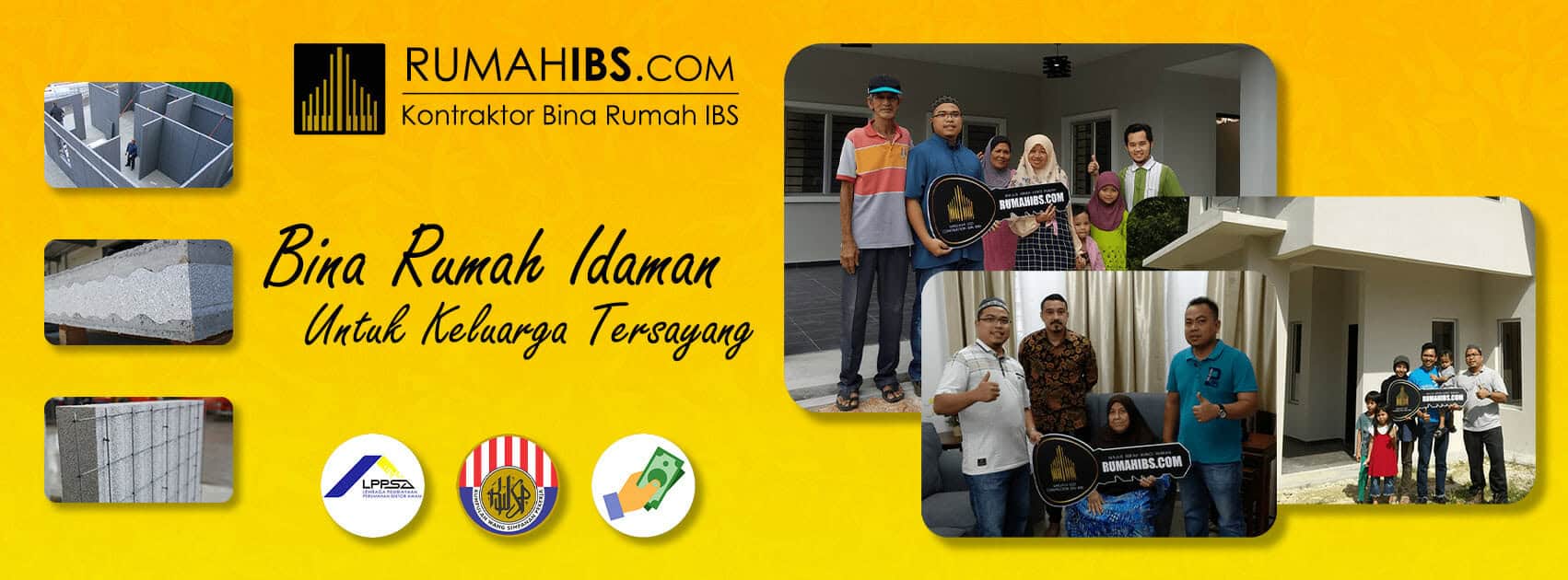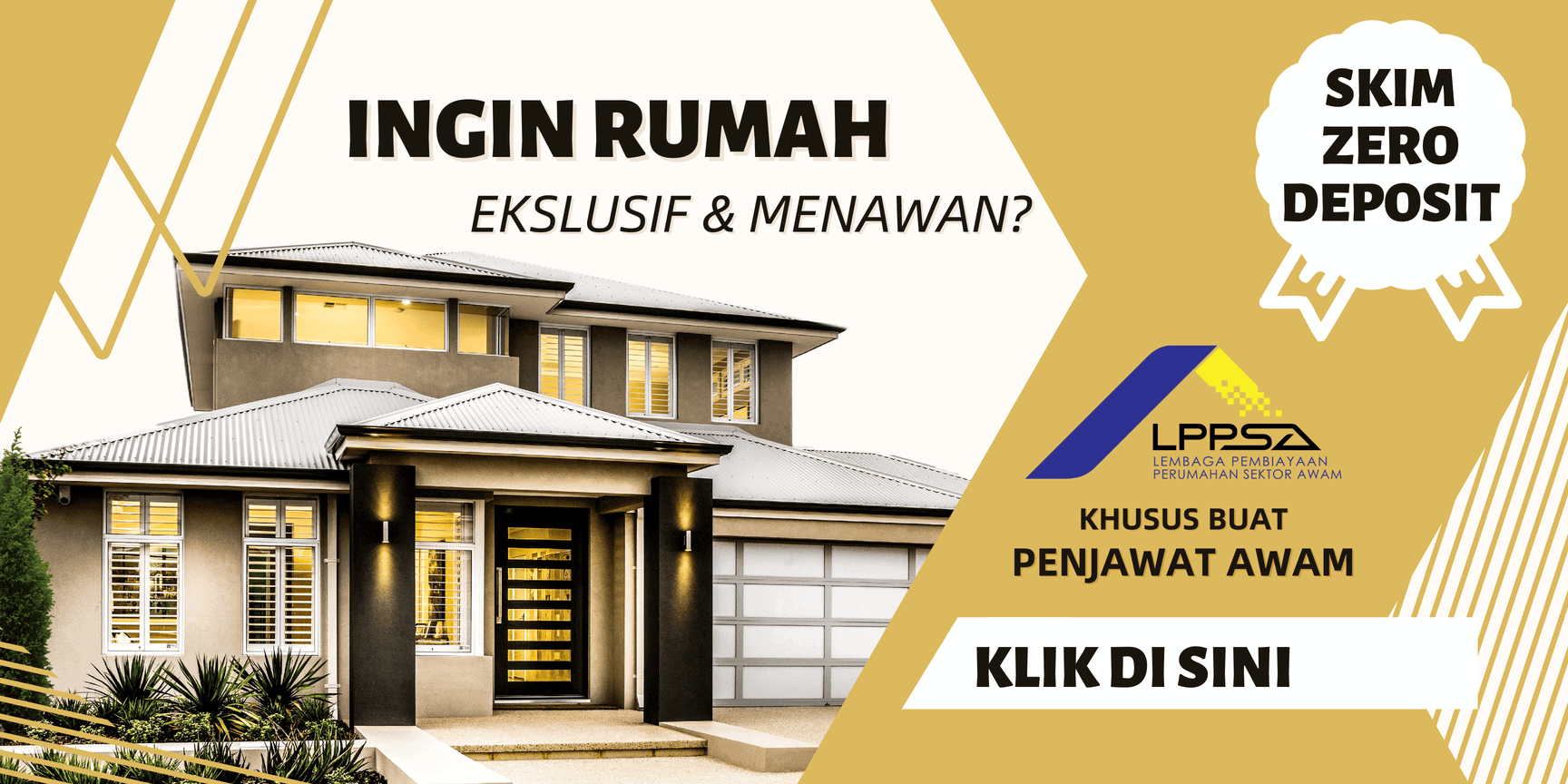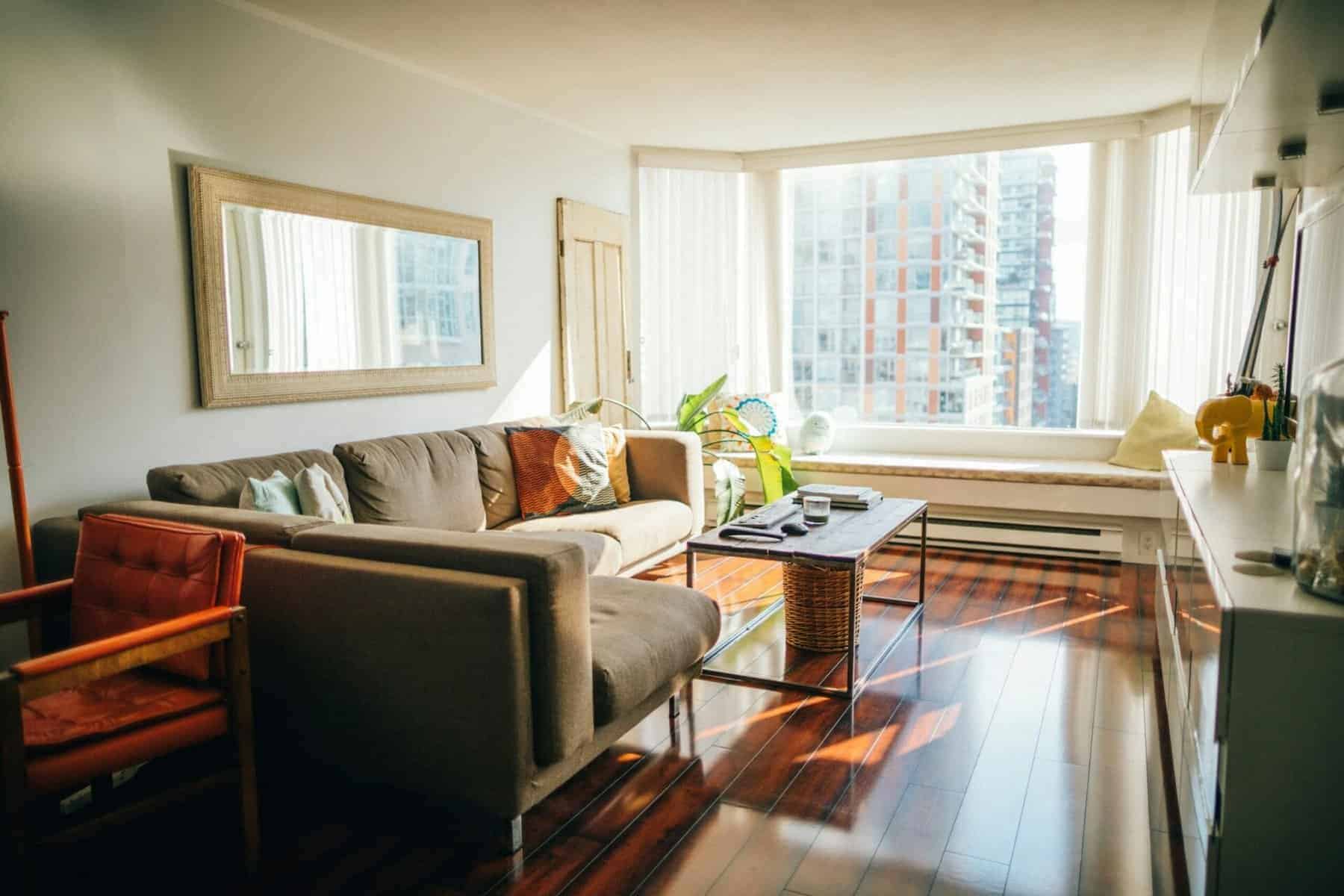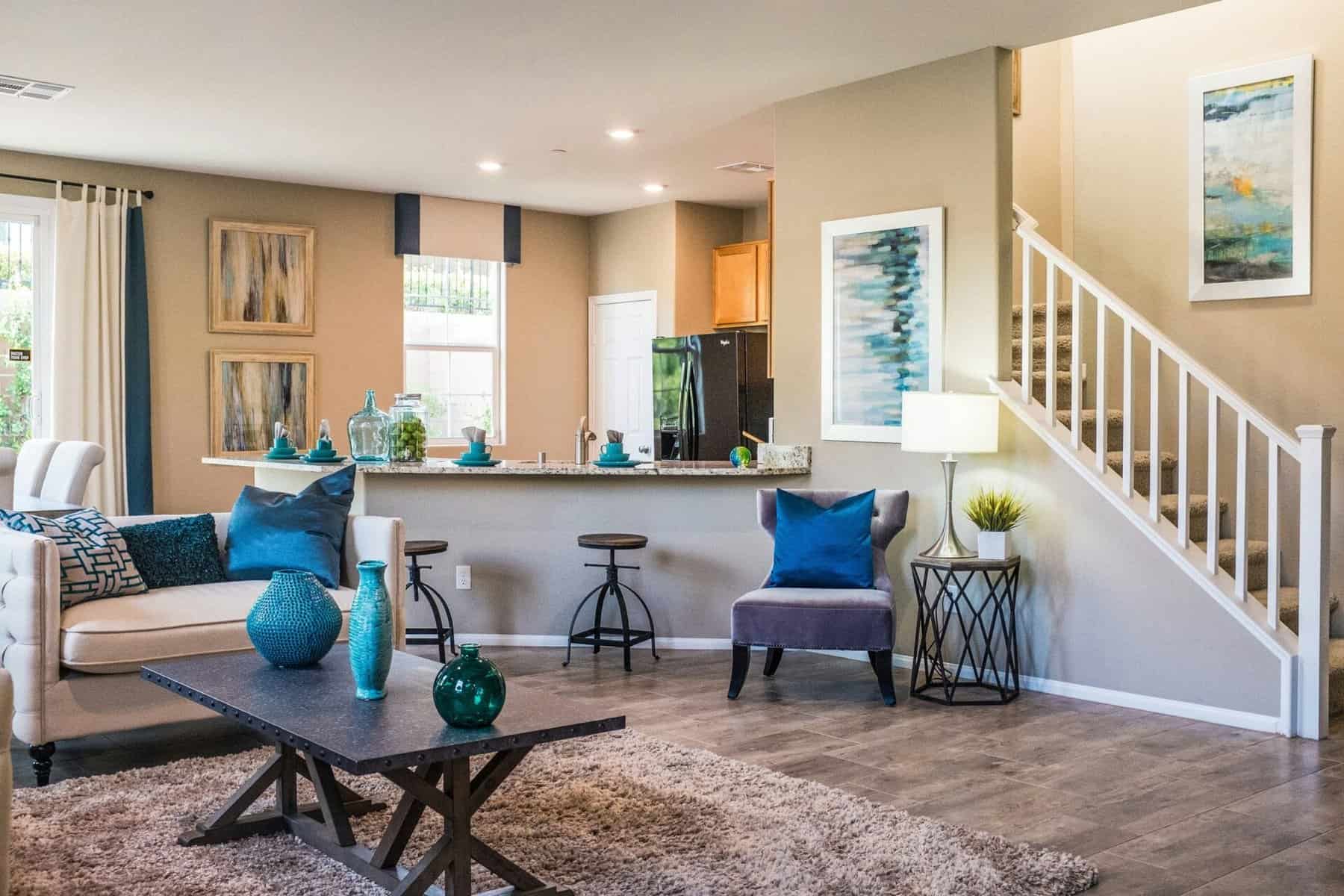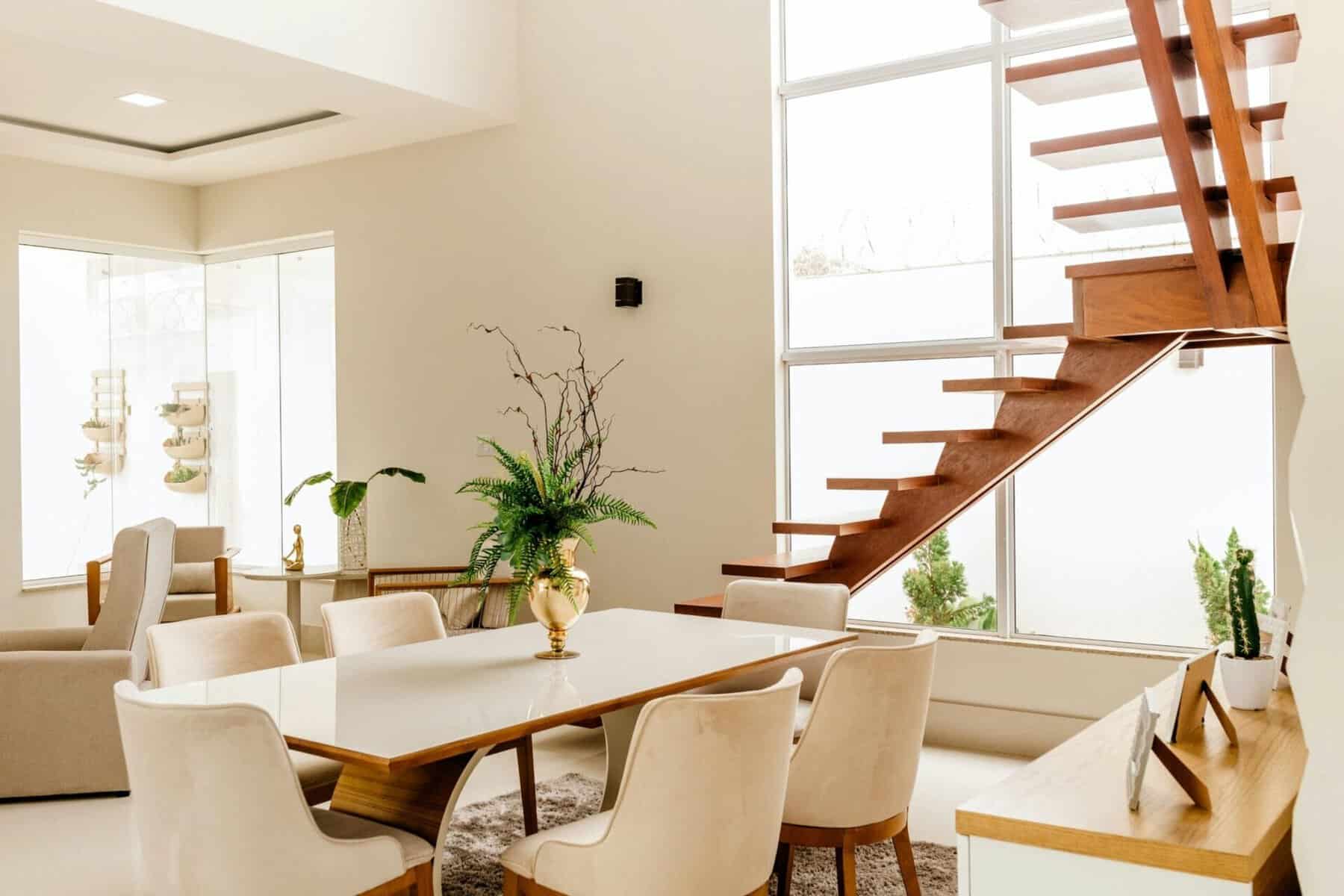- Bina Rumah Batu-Bata
- Zero Deposit
- Spesifikasi Rumah
- Lokasi Projek
- Pembiayaan LPPSA
- Garis Panduan LPPSA (Rasmi)
- Soalan Lazim LPPSA
- E-Book LPPSA (Download)
- 1. Apa itu LPPSA?
- 2. Kelebihan LPPSA
- 3. Syarat Kelayakan
- 4. Jenis-Jenis Pembiayaan
- Jenis 1 – Pembelian Rumah Kediaman Yang Telah Siap
- Jenis 2 – Membina Rumah Di Atas Tanah Sendiri
- Jenis 3 – Membeli Rumah Kediaman Yang Sedang Dibina
- Jenis 4 – Pembelian Tanah Bagi Pembinaan Rumah
- Jenis 5 – Melunaskan Keseluruhan/ Sebahagian Pinjaman Sedia Ada Daripada Bank/ Institusi Kewangan
- Jenis 6 – Pembinaan Rumah Kediaman Di Atas Tanah Yang Sedang Dibiayai Oleh BPP/ LPPSA
- Jenis 7 – Ubah Suai Rumah Yang Sedang Atau Telah Selesai Bayar Melalui LPPSA
- 5. Semak Kelayakan LPPSA
- 6. Dokumen Yang Diperlukan
- 7. Insurans/ Takaful LPPSA
- 8. Kos Yuran Guaman
- 9. BONUS: Bina Rumah
- Pembiayaan Koperasi
- Pengeluaran KWSP
- Bayaran Tunai
- Kalkulator
Building Your Dream Home: A Comprehensive Guide to Budget-Friendly, Sustainable Construction on Private Land

Building Your Dream Home: A Comprehensive Guide to Budget-Friendly, Sustainable Construction on Private Land
1. Introduction
Building a home from the ground up is a dream for many. The idea of creating a space that reflects your personality, meets your needs, and fits your budget is undeniably enticing. But where do you start? How do you navigate the complexities of construction, permits, financing, and sustainability? Fear not, because in this comprehensive guide, we’ll walk you through every step of the process, empowering you to turn your dream of homeownership into a reality.
Setting the Stage: The Rise of DIY Home Building
In recent years, there has been a noticeable shift towards DIY home building. More and more people are choosing to take matters into their own hands, opting to build their homes on their own land rather than purchasing pre-built properties. This trend is driven by a desire for customization, cost savings, and creative expression. Building on private land offers a level of freedom and flexibility that traditional home buying cannot match. Plus, with advancements in technology and construction methods, DIY home building has become more accessible than ever before.
Why It Matters: Understanding the Journey Ahead
Embarking on a home building project is no small feat. It requires careful planning, diligent research, and a willingness to roll up your sleeves and get your hands dirty. But the rewards are immense. By building your own home, you have the opportunity to create a space that is truly yours, tailored to your unique preferences and lifestyle. From the layout and design to the materials and finishes, every decision is yours to make. But before you dive in headfirst, it’s important to understand the road ahead.
Charting Your Course: A Roadmap to Success
Consider this guide your roadmap to success. We’ll start by discussing the importance of obtaining building permits for construction on private land. Next, we’ll delve into the exciting world of home design, exploring how to craft the perfect space that reflects your personality and meets your needs. Then, we’ll explore the advantages of Industrialized Building Systems (IBS) and how they can streamline the construction process. After that, we’ll tackle the often-daunting task of financing your vision, offering insights into various financing options and government programs available for sustainable construction. We’ll also discuss the importance of sustainable building practices and provide tips for incorporating eco-friendly elements into your home. Finally, we’ll break down the construction process step by step, offering guidance on everything from site preparation to interior finishing touches.
Your Journey Begins Now
So, are you ready to embark on this exciting journey? Whether you’re a seasoned DIY enthusiast or a first-time builder, this guide will equip you with the knowledge and confidence you need to build your dream home on your own land. Let’s roll up our sleeves and get started!

alona gross jPShfuaDs9I unsplash scaled
2. Securing Your Space: Obtaining Building Permits for Private Land
When it comes to building your dream home on your own land, one of the first hurdles you’ll encounter is obtaining the necessary building permits. These permits are essential for ensuring that your construction project complies with local regulations and safety standards. In this section, we’ll explore the ins and outs of the permitting process, providing you with the knowledge you need to navigate it successfully.
Understanding the Permitting Process
Before you can break ground on your new home, you’ll need to obtain approval from your local building authority. This typically involves submitting detailed plans and specifications for your project and paying a fee. The purpose of these permits is to ensure that your construction project meets building codes, zoning regulations, and other legal requirements. The specific requirements can vary depending on your location, so it’s essential to do your research and reach out to your local building department for guidance.
Navigating the Regulatory Landscape
Navigating the permitting process can be a daunting task, especially for first-time builders. However, with proper planning and attention to detail, it’s entirely manageable. Start by familiarizing yourself with your local building codes and zoning regulations. These rules dictate things like building setbacks, height restrictions, and land use requirements, all of which can impact your construction project. Once you have a clear understanding of the rules, work closely with your architect or designer to create detailed plans that comply with them.
Tips for Success
Here are some tips to help you navigate the permitting process smoothly:
- Start Early: The permitting process can take time, so start early to avoid delays in your construction timeline.
- Be Thorough: Ensure that your permit application is complete and accurate to prevent unnecessary delays or rejections.
- Communicate Effectively: Stay in communication with your local building department throughout the process, seeking clarification or guidance as needed.
- Work with Professionals: Consider hiring a permit expeditor or consultant to help navigate the permitting process, especially if you’re unfamiliar with it.
- Budget Accordingly: Factor permit fees into your overall budget to avoid any surprises down the line.
Table: Common Permitting Requirements
| Permit Type | Description |
|---|---|
| Building Permit | Required for new construction, renovations, or additions to existing structures. |
| Zoning Permit | Ensures compliance with zoning regulations and land use requirements. |
| Electrical Permit | Necessary for electrical installations and upgrades. |
| Plumbing Permit | Required for plumbing installations and alterations. |
| Demolition Permit | Needed for the demolition of existing structures. |
Conclusion
Obtaining building permits for construction on private land is a crucial step in the home building process. By understanding the permitting requirements and following the tips outlined in this guide, you can navigate the process with confidence and ensure that your construction project stays on track. So, roll up your sleeves, dot your i’s, and cross your t’s – your dream home awaits!
3. Designing Your Dream: Crafting the Perfect Home on Your Own Land
Designing your dream home is perhaps the most exciting and personal part of the home building journey. It’s your chance to bring your vision to life and create a space that reflects your personality, style, and needs. In this section, we’ll explore the essential considerations and steps involved in designing the perfect home on your own land.
The Importance of Thoughtful Design
A well-designed home is more than just aesthetically pleasing – it’s functional, comfortable, and tailored to your lifestyle. Before diving into the specifics of floor plans and finishes, take some time to think about how you envision living in your new home. Consider factors such as:
- Lifestyle: Do you entertain frequently? Do you work from home? Consider how your home can support your daily activities and routines.
- Family Needs: If you have a family or plan to start one, think about their needs both now and in the future. How many bedrooms and bathrooms will you need? Is an open floor plan conducive to family gatherings?
- Personal Style: What architectural style resonates with you? Do you prefer modern minimalism, cozy farmhouse charm, or something in between? Your home should reflect your personal tastes and preferences.
Maximizing Space and Functionality
Once you have a clear understanding of your needs and preferences, it’s time to start thinking about the layout and design of your home. Consider the following tips for maximizing space and functionality:
- Open Floor Plans: Open layouts can create a sense of spaciousness and flow, perfect for entertaining and family gatherings.
- Multi-Functional Spaces: Design rooms with multiple functions in mind to make the most of every square foot. For example, a home office could double as a guest room with a pull-out sofa.
- Storage Solutions: Incorporate ample storage throughout your home to keep clutter at bay and maximize usable space.
- Natural Light: Take advantage of natural light by strategically placing windows and skylights to brighten up your home and reduce the need for artificial lighting during the day.
Incorporating Personal Touches
One of the most rewarding aspects of designing your own home is the ability to incorporate personalized touches and unique features. Whether it’s a custom-built fireplace, a cozy reading nook, or a gourmet kitchen, these elements add character and make your home truly yours. Consider consulting with an architect or designer to help bring your vision to life and ensure that every detail is carefully considered.
Table: Popular Architectural Styles
| Style | Description |
|---|---|
| Modern | Clean lines, minimalist design, and open floor plans. |
| Farmhouse | Rustic charm, exposed beams, and cozy, inviting spaces. |
| Mediterranean | Stucco exteriors, tiled roofs, and lush landscaping. |
| Craftsman | Handcrafted details, natural materials, and cozy interiors. |
| Contemporary | Bold geometric shapes, mixed materials, and cutting-edge design elements. |
Conclusion
Designing your dream home is an exhilarating process that allows you to create a space that is uniquely yours. By carefully considering your lifestyle, needs, and personal style, you can craft a home that not only meets your practical requirements but also brings you joy and inspiration every day. So, roll up your sleeves and let your creativity soar – your dream home awaits!

alona gross GwemUomHr5A unsplash
4. Building Blocks: Exploring the Advantages of Industrialized Building Systems (IBS)
When it comes to constructing your dream home, there are numerous building methods and systems to consider. One approach that has gained popularity in recent years is Industrialized Building Systems (IBS). In this section, we’ll delve into the advantages of IBS and how it can streamline the construction process while delivering quality results.
What is Industrialized Building Systems (IBS)?
IBS refers to a construction method where components of a building are manufactured in a controlled environment before being transported to the construction site for assembly. These components can include walls, floors, roofs, and even entire modules or panels. IBS relies on prefabrication and modular construction techniques to expedite the building process and improve efficiency.
Advantages of IBS
1. Speed and Efficiency
One of the primary benefits of IBS is its ability to accelerate the construction timeline. Since many building components are manufactured off-site, construction can proceed concurrently, reducing overall build time. This can be especially advantageous for large-scale projects or developments with tight deadlines.
2. Quality Control
IBS components are manufactured in a controlled environment using precise techniques and machinery. This results in higher quality and consistency compared to traditional on-site construction methods, where factors like weather and human error can impact the final product. Additionally, the use of standardized components can minimize variations and improve overall structural integrity.
3. Cost Savings
While upfront costs for IBS components may be higher than traditional building materials, the overall cost savings can be significant. Faster construction timelines mean reduced labor costs and overhead expenses. Additionally, the efficiency of IBS can result in fewer material wastage, further lowering overall project costs.
4. Flexibility and Customization
Contrary to common misconceptions, IBS offers a high degree of flexibility and customization. Components can be tailored to meet specific design requirements and preferences, allowing for a wide range of architectural styles and finishes. From traditional to contemporary, IBS can accommodate diverse design aesthetics without sacrificing efficiency or quality.
Table: Types of IBS Components
| Component | Description |
|---|---|
| Precast Concrete | Prefabricated concrete panels, beams, and columns. |
| Modular Construction | Entire building modules or sections assembled off-site. |
| Prefabricated Timber | Structural elements made from engineered wood products. |
| Steel Framing | Prefabricated steel frames and trusses for structural support. |
| SIPs (Structural Insulated Panels) | Insulated panels consisting of foam insulation sandwiched between two layers of sheathing. |
Conclusion
Industrialized Building Systems (IBS) offer numerous advantages for home construction, including speed, efficiency, quality control, cost savings, and flexibility. By leveraging prefabrication and modular construction techniques, homeowners can enjoy a streamlined building process without compromising on quality or customization. Whether you’re building a modest family home or a large-scale development, IBS is a modern, efficient, and sustainable approach to construction that is worth considering for your next project.
5. Financing Your Vision: Options for Affordable Home Construction
Building your dream home on your own land is an exciting prospect, but it’s essential to consider the financial aspects of the project. From purchasing the land to financing the construction itself, there are several options available to help you bring your vision to life without breaking the bank. In this section, we’ll explore some of the financing options for affordable home construction.
Traditional Mortgage Loans vs. Construction Loans
When it comes to financing a home construction project, there are two primary options: traditional mortgage loans and construction loans. Here’s a brief overview of each:
Traditional Mortgage Loans
- Purpose: Traditional mortgage loans are used to purchase existing homes or properties.
- Disbursement: The entire loan amount is typically disbursed upfront at the time of purchase.
- Interest Rates: Interest rates may be fixed or variable, depending on the terms of the loan.
- Repayment: Repayment begins immediately after the loan is disbursed, usually in the form of monthly mortgage payments.
Construction Loans
- Purpose: Construction loans are specifically designed to finance the construction of a new home.
- Disbursement: Funds are disbursed in stages or “draws” as construction progresses, based on predetermined milestones.
- Interest Rates: Construction loans often have higher interest rates than traditional mortgage loans, reflecting the higher risk associated with construction projects.
- Repayment: Repayment typically begins after construction is complete, at which point the loan may be converted into a traditional mortgage loan.
Government Programs and Incentives
In addition to traditional mortgage and construction loans, there are various government programs and incentives available to assist with affordable home construction. These programs may offer:
- Low-interest loans
- Down payment assistance
- Tax incentives
- Grants for energy-efficient or sustainable construction
Researching and exploring these programs can help you identify additional sources of funding and potentially reduce the overall cost of your home construction project.
Table: Types of Financing Options
| Financing Option | Description |
|---|---|
| Traditional Mortgage | Used to purchase existing homes or properties. |
| Construction Loan | Specifically designed to finance the construction of a new home. |
| FHA Loan | Government-backed loan insured by the Federal Housing Administration. |
| USDA Loan | Loan program for rural homebuyers offered by the U.S. Department of Agriculture. |
| VA Loan | Loan program for eligible veterans, active-duty service members, and surviving spouses. |
| Energy-Efficient Mortgage | Financing option that incentivizes energy-efficient home construction. |
Conclusion
Financing is a crucial aspect of any home construction project, and exploring your options can help make your dream home a reality. Whether you opt for a traditional mortgage loan, a construction loan, or leverage government programs and incentives, there are plenty of ways to finance affordable home construction. By carefully considering your financial situation and researching the available options, you can find the right financing solution to fit your needs and budget.

alona gross Coj5dSxgh0Y unsplash
6. Sustainable Solutions: Eco-Friendly Practices for Your Home
In today’s world, sustainability is more than just a buzzword – it’s a way of life. When it comes to building your dream home on your own land, incorporating eco-friendly practices is not only good for the environment but can also lead to cost savings and a healthier living environment for you and your family. In this section, we’ll explore some sustainable solutions for your home construction project.
The Importance of Sustainability
Before diving into specific eco-friendly practices, let’s take a moment to understand why sustainability matters. By building sustainably, you can:
- Reduce Environmental Impact: Sustainable building practices help minimize the depletion of natural resources and reduce pollution and waste.
- Lower Operating Costs: Energy-efficient homes consume less energy, resulting in lower utility bills over time.
- Improve Indoor Air Quality: Sustainable materials and construction techniques can help create a healthier indoor environment by reducing exposure to toxins and pollutants.
- Enhance Resale Value: With growing awareness of environmental issues, homes with sustainable features are increasingly attractive to homebuyers, potentially increasing resale value.
Incorporating Eco-Friendly Elements
From energy-efficient design to renewable energy sources, there are numerous ways to incorporate eco-friendly elements into your home construction project:
1. Energy-Efficient Design
- Passive Solar Design: Orienting your home to maximize natural light and heat can reduce reliance on artificial lighting and heating systems.
- High-Performance Windows: Installing energy-efficient windows with double or triple glazing can improve insulation and reduce heat loss.
- Proper Insulation: Adequate insulation throughout your home can help maintain comfortable temperatures year-round and reduce energy consumption.
2. Renewable Energy Sources
- Solar Panels: Installing solar panels on your roof can generate clean, renewable energy to power your home and reduce reliance on the grid.
- Geothermal Heating and Cooling: Geothermal systems use the earth’s natural temperature to heat and cool your home efficiently and sustainably.
3. Sustainable Materials
- Recycled and Reclaimed Materials: Using recycled or reclaimed materials for construction can reduce the demand for virgin resources and minimize waste.
- Low-impact Materials: Choose materials with low embodied energy and environmental impact, such as bamboo flooring, recycled glass countertops, and VOC-free paints.
Table: Sustainable Building Certifications
| Certification | Description |
|---|---|
| LEED (Leadership in Energy and Environmental Design) | Internationally recognized green building certification system. |
| ENERGY STAR | Certification for energy-efficient homes and appliances. |
| Passive House | Certification for homes that meet rigorous energy efficiency standards. |
| Green Globes | Building assessment and certification program for sustainable design and construction. |
Conclusion
Incorporating eco-friendly practices into your home construction project is not only beneficial for the environment but also for your wallet and well-being. By prioritizing sustainability and leveraging energy-efficient design, renewable energy sources, and sustainable materials, you can create a home that is both environmentally responsible and comfortable to live in. So, embrace the green building movement and build your dream home with the future in mind!
7. From Ground Up: Navigating the Construction Process
Building a home from the ground up is a monumental undertaking, but with proper planning and guidance, it can also be an incredibly rewarding experience. In this section, we’ll break down the construction process step by step, providing you with the knowledge and resources you need to navigate each stage successfully.
Step 1: Site Preparation
Before construction can begin, the site must be prepared. This involves clearing vegetation, leveling the ground, and preparing the foundation. Depending on the site’s characteristics, additional steps such as excavation or grading may be required. It’s essential to work with experienced professionals to ensure that the site preparation is done correctly and according to local regulations.
Step 2: Foundation Construction
The foundation is the backbone of your home, providing stability and support for the structure above. There are several types of foundations to choose from, including slab-on-grade, crawl space, and basement. The choice of foundation will depend on factors such as soil conditions, climate, and budget. Once the foundation is poured or constructed, it must be allowed to cure properly before further construction can proceed.
Step 3: Framing and Structure Assembly
With the foundation in place, the next step is framing and structure assembly. This involves erecting the skeleton of the home, including walls, floors, and roof trusses. Traditional wood framing is common, but alternative materials such as steel or engineered lumber may also be used. The framing stage is critical as it sets the stage for the rest of the construction process and determines the overall shape and layout of the home.
Step 4: Roofing and Exterior Finishes
Once the structure is in place, it’s time to focus on roofing and exterior finishes. This includes installing roofing materials such as shingles or metal panels, as well as siding, windows, and doors. These elements not only protect the home from the elements but also contribute to its aesthetic appeal and curb appeal.
Step 5: Interior Finishing Touches
With the exterior of the home taking shape, attention turns to interior finishing touches. This includes insulation, drywall installation, flooring, cabinetry, and trim work. Interior finishes are where the personalization of your home really shines, allowing you to add your unique style and personality to every room.
Table: Construction Timeline
| Stage | Timeline (Approx.) |
|---|---|
| Site Preparation | 1-2 weeks |
| Foundation | 2-4 weeks |
| Framing | 4-6 weeks |
| Roofing & Exterior Finishes | 2-4 weeks |
| Interior Finishing | 4-8 weeks |
Step 6: Plumbing, Electrical, and HVAC Installations
Once the interior finishes are complete, it’s time to focus on plumbing, electrical, and HVAC (heating, ventilation, and air conditioning) installations. This includes rough-in work, where pipes, wires, and ductwork are installed behind walls and under floors, as well as final installations of fixtures, outlets, and appliances.
Step 7: Landscaping and Exterior Features
The final step in the construction process is landscaping and exterior features. This includes grading and planting, as well as the installation of outdoor amenities such as patios, decks, and walkways. Landscaping not only enhances the aesthetic appeal of your home but also contributes to its overall value and livability.
Conclusion
Navigating the construction process can be daunting, but with careful planning and guidance, it’s entirely manageable. By breaking the process down into manageable steps and working closely with experienced professionals, you can bring your dream home to life from the ground up. So, roll up your sleeves and get ready to watch your vision take shape before your eyes!

alona gross B0IODAGH1Kk unsplash
8. Conclusion: Building Your Future Home with Confidence
Congratulations! You’ve reached the end of our comprehensive guide to building your dream home on your own land. Throughout this journey, we’ve explored the ins and outs of the construction process, from obtaining building permits to navigating the financing options and incorporating sustainable practices. As you prepare to embark on this exciting adventure, let’s take a moment to reflect on what we’ve learned and look ahead to the future.
Recap of Key Points
- Obtaining Building Permits: We discussed the importance of obtaining the necessary permits for construction on private land and provided tips for navigating the permitting process efficiently.
- Designing Your Dream Home: We explored the essential considerations for designing the perfect home, from maximizing space and functionality to incorporating personalized touches and unique features.
- Exploring Industrialized Building Systems (IBS): We delved into the advantages of IBS and how it can streamline the construction process while delivering quality results.
- Financing Your Vision: We discussed various financing options for affordable home construction, including traditional mortgage loans, construction loans, and government programs and incentives.
- Embracing Sustainable Practices: We highlighted the importance of sustainability in home construction and provided tips for incorporating eco-friendly elements into your project.
- Navigating the Construction Process: We broke down the construction process step by step, providing guidance on site preparation, foundation construction, framing, finishing touches, and more.
Looking Ahead
As you prepare to embark on your home building journey, remember that you’re not alone. Whether you’re a seasoned DIY enthusiast or a first-time builder, there are resources and professionals available to support you every step of the way. From architects and builders to lenders and sustainability experts, don’t hesitate to reach out for assistance and guidance as needed.
Your Dream Home Awaits
Building your dream home on your own land is a once-in-a-lifetime opportunity to create a space that is uniquely yours. It’s a chance to design a home that reflects your personality, meets your needs, and fits your budget. By leveraging the knowledge and insights gained from this guide, you can approach the construction process with confidence and excitement, knowing that your dream home is within reach.
Table: Next Steps Checklist
| Task | Completed |
|---|---|
| Obtain Building Permits | [ ] |
| Finalize Home Design | [ ] |
| Secure Financing | [ ] |
| Select Sustainable Features | [ ] |
| Hire Contractors | [ ] |
| Begin Construction | [ ] |
| Monitor Progress | [ ] |
| Celebrate Completion | [ ] |
Conclusion
Building your future home is more than just a construction project – it’s a journey of self-discovery, creativity, and perseverance. By embracing the challenges and opportunities that come with building on your own land, you’re not just creating a place to live; you’re building the foundation for a lifetime of memories and adventures. So, take a deep breath, trust in your vision, and get ready to embark on the adventure of a lifetime. Your dream home awaits!
